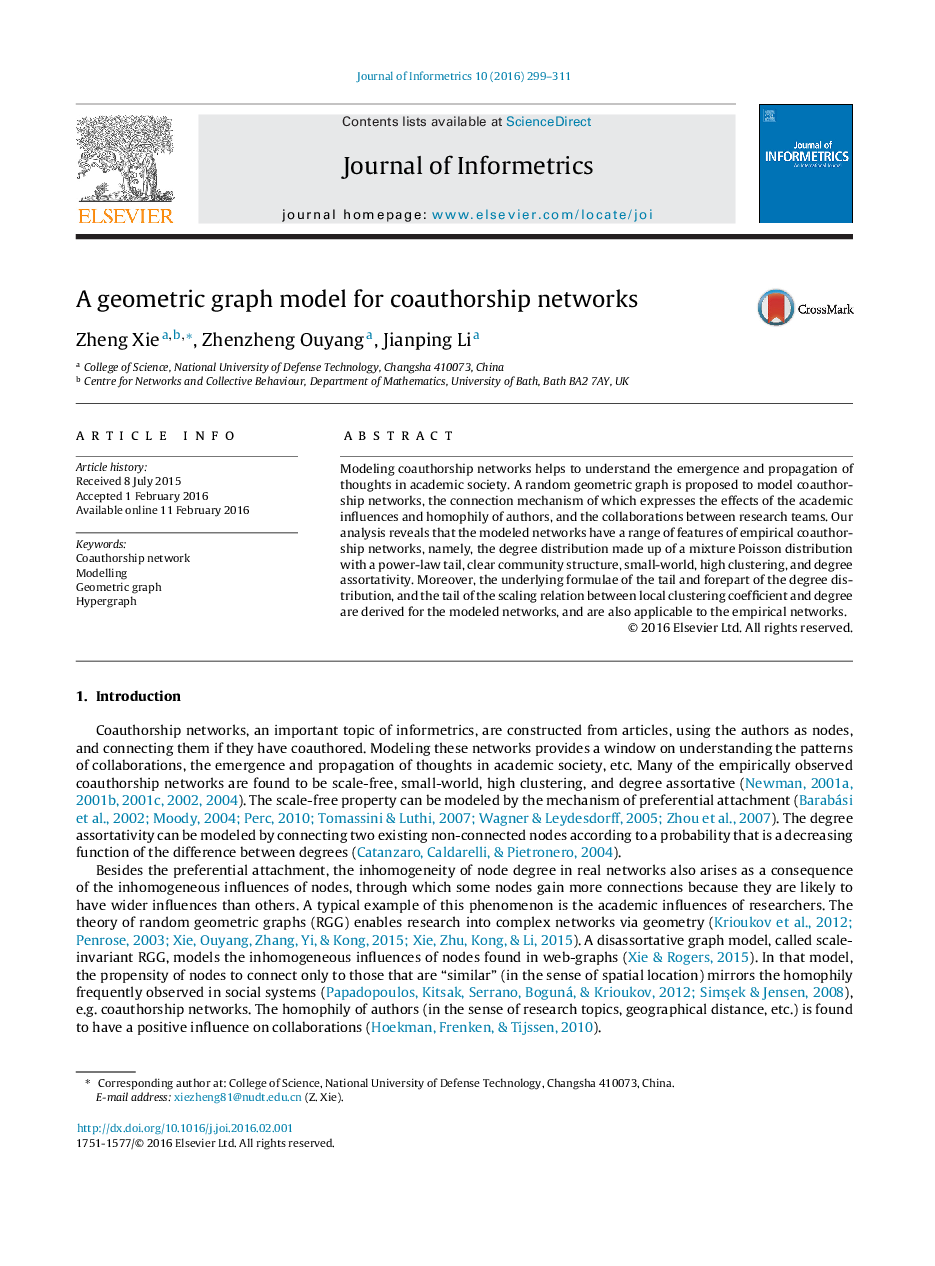| Article ID | Journal | Published Year | Pages | File Type |
|---|---|---|---|---|
| 10358350 | Journal of Informetrics | 2016 | 13 Pages |
Abstract
Modeling coauthorship networks helps to understand the emergence and propagation of thoughts in academic society. A random geometric graph is proposed to model coauthorship networks, the connection mechanism of which expresses the effects of the academic influences and homophily of authors, and the collaborations between research teams. Our analysis reveals that the modeled networks have a range of features of empirical coauthorship networks, namely, the degree distribution made up of a mixture Poisson distribution with a power-law tail, clear community structure, small-world, high clustering, and degree assortativity. Moreover, the underlying formulae of the tail and forepart of the degree distribution, and the tail of the scaling relation between local clustering coefficient and degree are derived for the modeled networks, and are also applicable to the empirical networks.
Keywords
Related Topics
Physical Sciences and Engineering
Computer Science
Computer Science Applications
Authors
Zheng Xie, Zhenzheng Ouyang, Jianping Li,
